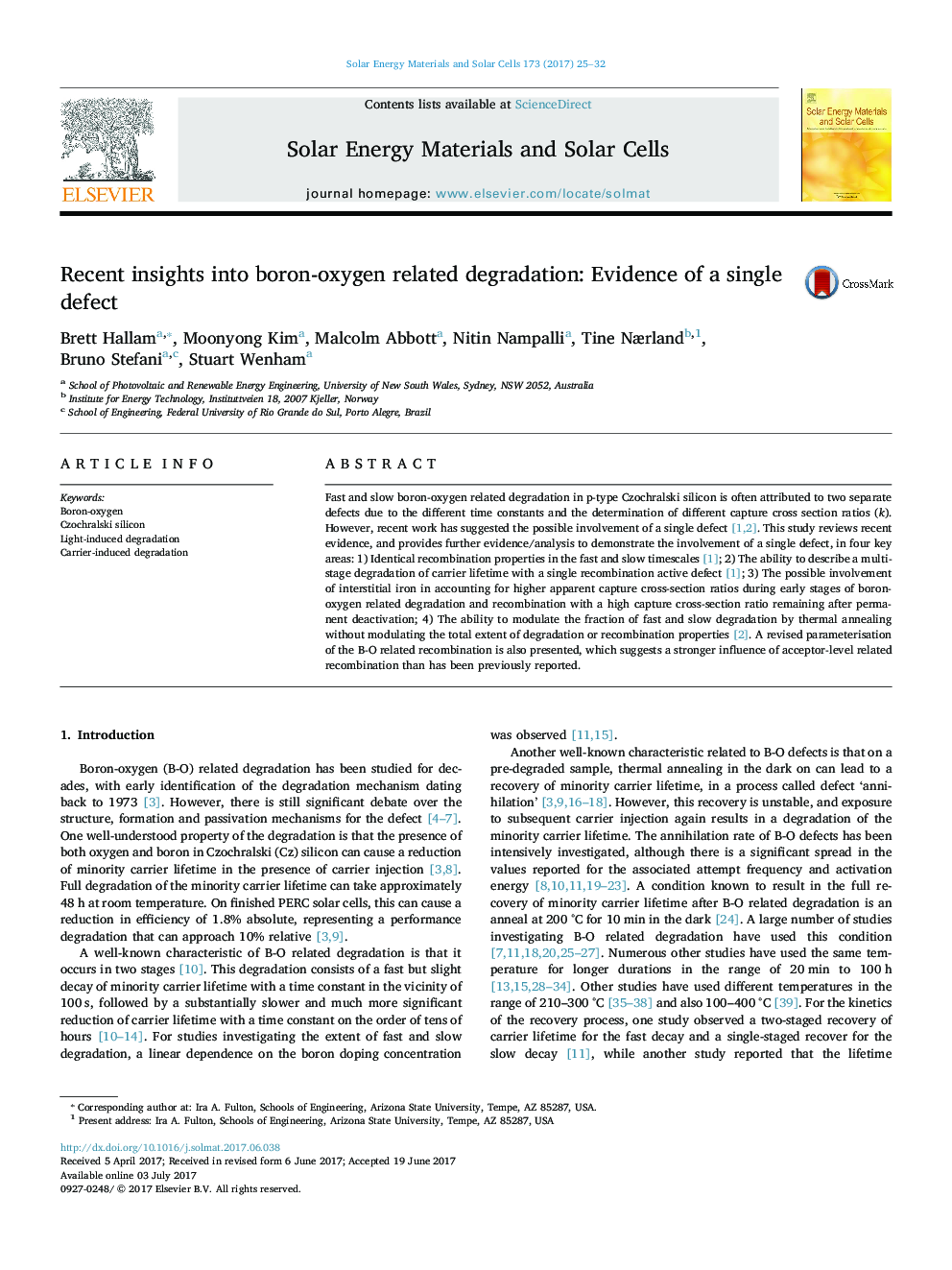| Article ID | Journal | Published Year | Pages | File Type |
|---|---|---|---|---|
| 6456774 | Solar Energy Materials and Solar Cells | 2017 | 8 Pages |
â¢B-O degradation can be described by a single set of recombination properties all throughout the 'fast' and 'slow' timescales.â¢Modelling is presented with multi-stage degradation using a single defect that can accurately describe B-O degradation data.â¢Interstitial iron can potentially explain several anomalous results published in the literature.â¢The fraction of fast and slow B-O degradation can be modulated without changing the recombination properties.
Fast and slow boron-oxygen related degradation in p-type Czochralski silicon is often attributed to two separate defects due to the different time constants and the determination of different capture cross section ratios (k). However, recent work has suggested the possible involvement of a single defect [1,2]. This study reviews recent evidence, and provides further evidence/analysis to demonstrate the involvement of a single defect, in four key areas: 1) Identical recombination properties in the fast and slow timescales [1]; 2) The ability to describe a multi-stage degradation of carrier lifetime with a single recombination active defect [1]; 3) The possible involvement of interstitial iron in accounting for higher apparent capture cross-section ratios during early stages of boron-oxygen related degradation and recombination with a high capture cross-section ratio remaining after permanent deactivation; 4) The ability to modulate the fraction of fast and slow degradation by thermal annealing without modulating the total extent of degradation or recombination properties [2]. A revised parameterisation of the B-O related recombination is also presented, which suggests a stronger influence of acceptor-level related recombination than has been previously reported.
